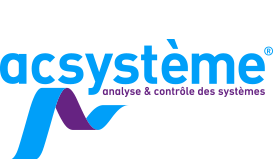
Predictive control and its industrial applications
In his opening speech, Mr. Jacques Richalet, first apostle of predictive control in France, underlined the major benefits of predictive control PFC (Predictive Functional Control): better performance than a traditional PID controller, and easy to set and implement. Since its first implementation in 1968, PFC’s field of application has never stopped expanding, improving performance in all kinds of industries: pharmaceutical, chemical, steel and even petrochemicals.
The first testimony of the day proved PFC’s efficiency in controlling an Alstom coal-fired thermal power station. The constructor’s R&D department had been studying feasibility of using PFC in order to control two loops known for being difficult: holding the water level in the boiler steam drum and the temperature of over-heat steam (power plant efficiency directly depends on these two parameters). Values that came out of simulations showed that predictive control ensures performance imposed by the specifications.
The next speaker described why Sanofi’s technical services chose predictive control in order to regulate internal temperatures in reactors during chemical processes. Using the same reactor for the synthesis of different products brought to light the interest of a model-based command.
ECAM and EDF R&D presented the outcomes of a partnership which enhanced the energetic efficiency of refrigeration units possessed by EDF in the Renardières area. For this sort of process with heavy disturbance, a PID controller is pretty tricky to adjust. PFC replaced PID in order to regulate the overheating leaving the evaporator, condensation pressure and freezing power. It resulted in good performance that motivated the team to extend their research in predictive control to other kinds of thermal machines: boilers, induction furnaces…
Every participant highlighted much better performance with the use of predictive control instead of a PID controller. To know the process’ behavior is a key point of predictive control. The dynamic model used to predict the system’s behavior is the basic constituent of this method. Solutions introduced during this afternoon were realised considering the processes to be controlled as a first order system with pure delay. In this particular case, implementation of PFC only requires the identification of three parameters: a static gain, a time constant and a pure delay. With more complicated processes for which nonlinearity cannot be neglected, identifying a system control can turn out to be a harder task than designing the control law.
To deal with this problem, Acsystème and Lagep (Laboratory of Automation and Process Engineering) started a Cifre thesis concerning the parametric identification in a closed loop with optimal control.
Petru-Daniel Moroşan, engineer and doctor in automatic control
